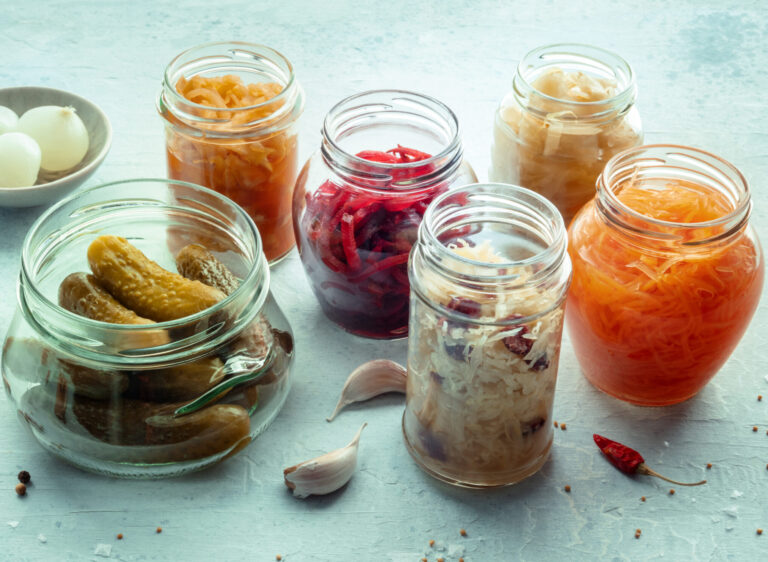5 Curing Salts Benefits to Improve Flavor and Save Money
Curing salts are essential for enhancing meat flavor, extending shelf life, promoting food safety, offering cooking versatility, and saving money on food waste.

Curing salts have been a time-honored method for preserving and enhancing the flavor of meats, dating back centuries. With their numerous benefits and versatile culinary applications, it’s no wonder that these pantry powerhouses are gaining popularity among modern home cooks.
From enhancing flavor, improving shelf life, and saving money in the long run, let’s explore why curing salts should earn a permanent spot in your kitchen arsenal.
Disclosure: As an Amazon Associate, this site earns from qualifying purchases. Thank you!
Enhance the Flavor and Texture of Meat
One of the primary benefits of curing salts in your pantry is their ability to enhance the flavor and texture of meat significantly. By drawing out moisture from the meat during the curing process, salts allow for a more concentrated and richer taste to develop.
Additionally, curing salts play a vital role in improving a meat’s texture. For instance, many enjoy the tenderness and velvety feel accompanying dry-cured meats like coppa or pancetta.
These irresistible textures can only be achieved through proper curing with high-quality salts.
Increase the Shelf-Life of Cured Meats
Another benefit of using curing salts in meat preservation is significantly increasing the cured meat‘s shelf-life. By drawing out moisture and creating a hostile environment for bacterial growth, curing salts help ensure that your homemade charcuterie or other preserved meats last much longer than they would without this crucial ingredient.
For example, traditional methods like air-drying can take weeks or even months to preserve meats properly; however, when combined with curing salts, these processes are significantly shortened while maintaining excellent taste and texture, meaning you can store delicious aged salami or prosciutto in your pantry for several months without worrying about rapid deterioration or spoilage.
Promote Food Safety
Another benefit to keeping curing salts in your food pantry is their ability to promote food safety. When added to meats as part of the curing process, these salts help preserve them and create an environment that inhibits harmful bacteria growth.
To use curing salts for food safety effectively, following established guidelines when preparing your cured meats is crucial. Correctly measuring the quantity and type of salt used (e.g., sodium nitrite or nitrate-free alternatives), strictly adhering to prescribed curing times and temperatures, and accurately maintaining humidity levels during storage are all essential elements in ensuring a safe final product.
Versatility in Cooking
Beyond food preservation, curing salts are incredibly versatile. You can use them in various cooking methods for seasoning, flavor enhancement, meat curing, cooking versatility, salt blends, dry rubs, brining, and smoking.
Whether you are a seasoned chef or an amateur cook, having curing salts on hand will add some extra oomph to your dishes.
For instance, using curing salts as a dry rub in smoked meats such as bacon adds complex salty flavors that complement the smokiness of the meat. You can also add curing salts to pickling recipes to give them an umami edge that’s hard to resist.
Adding curing salts while boiling peanuts creates a mouth-watering snack perfect for movie nights or game-day parties.
Save Money on Food Waste
Using curing salts as a pantry staple can be an effective solution to reducing food waste and ultimately saving money. By extending the shelf life of cured meats, you can ensure they do not spoil before being consumed or used in recipes.
Additionally, curing salts can be used on various meats and fish, allowing for versatility in cooking and minimizing the chance of unused ingredients being wasted.
Buying curing salts in bulk is also a cost-effective option that will save money over time, especially when compared to continuously purchasing fresh meat that may go bad before use.
What salt is best for curing?
One of the most common types of curing salt is Prague powder, which contains sodium nitrite or a combination of sodium nitrite and sodium nitrate.
This salt helps preserve meat by preventing bacterial growth and enhances flavor and color.
Is curing salt healthy?
Curing salt can promote food safety and shelf-life, but the salt itself is toxic to humans; however, it is not present in cured meats with a high enough quality to cause an issue.
What are the types of curing salt?
There are primarily two types of curing salt: one has 89.75% normal salt, 6.25% sodium nitrite and 4% sodium nitrate. The other has 93.75% normal salt and 6.25% sodium nitrite.
Is pink Himalayan salt curing salt?
Pink Himalayan salt is not a curing salt. While pink Himalayan salt contains some minerals and nutrients, it does not have the same composition as curing salts.






